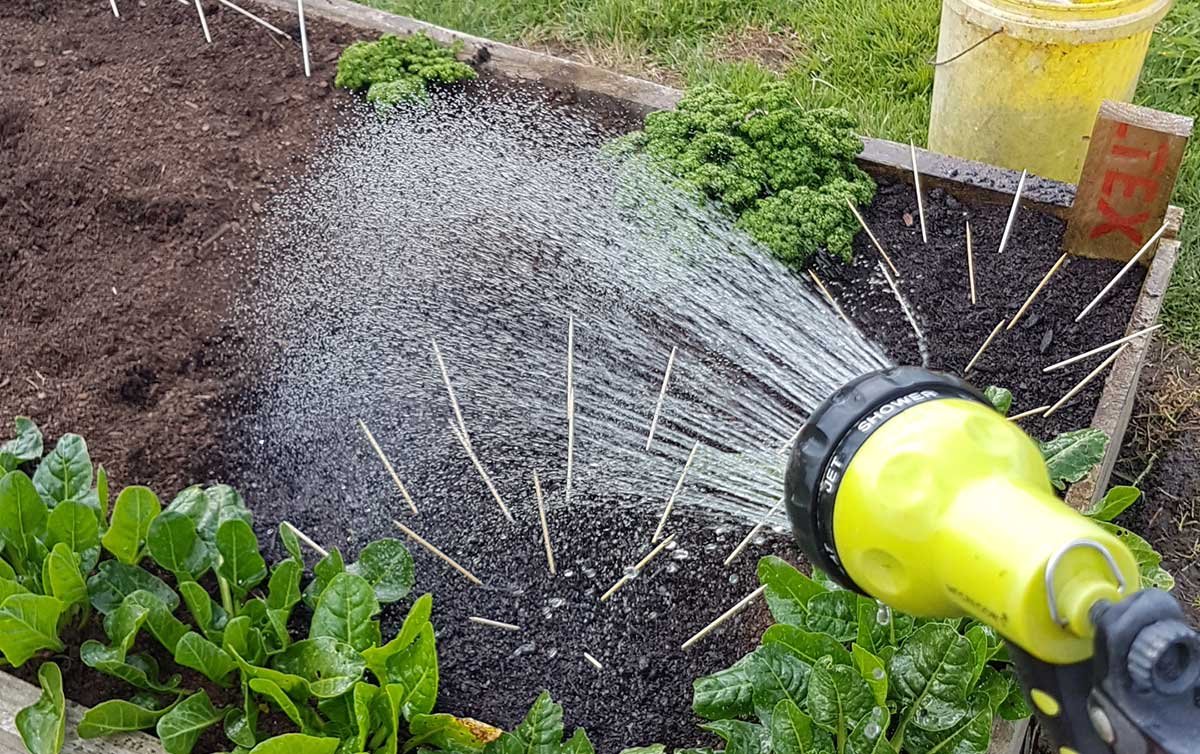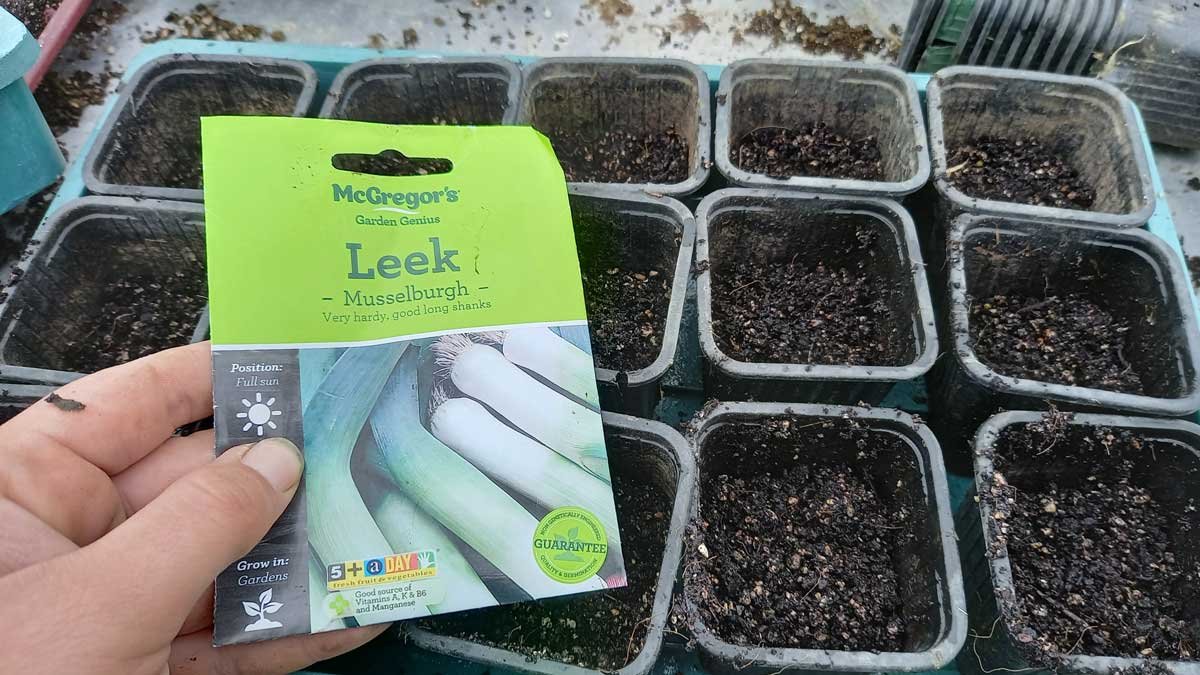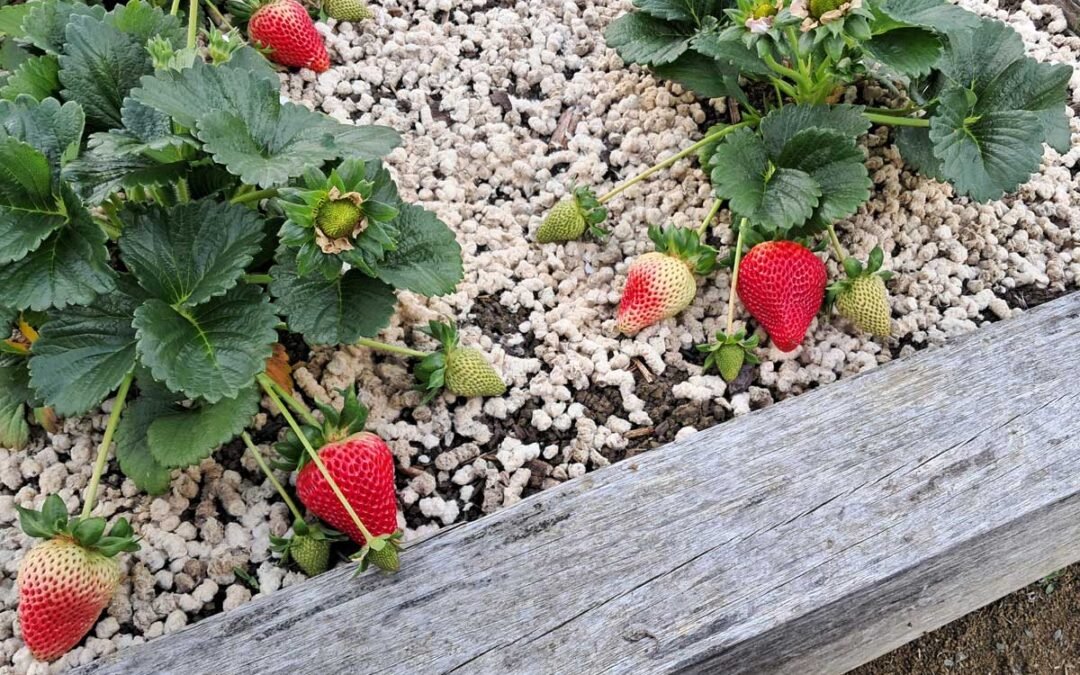November is an interesting month – it’s warmer, meaning more plants can be grown and tended to, and there’s more daylight, providing more of an opportunity to get into the garden. But it’s also a time when other commitments really begin showing up in the calendar.
End-of-year pressures crop up at school or work, plus the increasing burden of festive obligation in the lead up to Christmas can make it hard to find the time to get outside and actually do anything.
Personally, I feel like I’m literally going around in circles trying to stay on top of the weeds. I try to find 15-20 minutes a day to dedicate solely to weeding, and there is never seems to be a lack of places to start! Thankfully the grass growth is picking up again, providing me with mulch to help keep them at bay.
But if you can find the time – even if it’s only a short time – then whatever you do now is likely to pay off when your office or school closes, and you’re free to enjoy it. So if you want flowers, plant flowers. If you want potatoes, plant some potatoes.
If you’re planning to go away over the break and won’t have anyone to water the garden, then throw in some green manure now and dig it in before you set off. Your garden will be slightly improved and ready for planting upon your return.
Topline tasks for this month:
- Plant basically everything, everywhere. It’s go-time to let loose with all your good intentions.
- Mulch. Covering your beds with hay, straw, wool, compost, or grass clippings will help keep the moisture in, and the weeds out.
- Thin your stone fruit crops.
- Fertilise and spray citrus crops.
November is a busy, busy month in the garden, so let’s get into it!
Zones
Some districts can get away with things others can’t at different times of the year.
Living in the Far North, I have a very long growing season and can still grow some things my friends further south don’t have time for.
So where necessary, I’ll be referring to the zones shown on this map if the advice only applies to some areas.

Sweetcorn
Sweetcorn is best planted as seeds directly into your garden. Push them in as deep as the base of your fingernail and 20-30cm spacing. I often plant two seeds per spot. Water well.
Plant your sweetcorn in blocks, rather than rows. This will improve pollination to ensure juicy even, fat cobs with no missing kernels.
If you live in a Zone C then you may want to consider a fast-maturing variety such as ‘Early Marika’. These allow you to get a harvest in a shorter season.
If you’re looking at the seeds in the garden centre and thinking “that’s a bit cheeky” (and at $8 per packet at mine, I certainly did!); head on over to Egmont Seeds where they’re $3.50, there’s no minimum purchase, and you’ll get bonus seeds too.
Legumes
Sow dwarf and climbing beans (not broad beans, they’re different) directly into the soil. Soak the seed in warm (not hot) water overnight, then push into the soil to the base of your finger nail at 20cm spacing. Water in well.

Direct Sowing Guide
Direct sowing is spreading seed in the place you want to grow it. This is the best way of getting good results for some crops. Find out which ones!
Dwarf beans will not need supports – they’ll grow 30-45cm high and stand pretty well by themselves. Climbing beans will need something to grow up. This doesn’t have to be a climbing frame – planting amongst corn or sunflowers is also effective.
And if you live in Zone A and are fairly confident you won’t get a frost until late April, then you can give peanuts a try. They’re a really fun plant to grow.

Planting Peanuts
Learn more about how peanuts grow, and how to grow them.
If you live in Zones B or C, then there’s still time for another round of peas.
Beetroot and silverbeet
You can sow beetroot and silverbeet seed directly into the garden now. Be sure to use some slug and snail pellets to protect them while they’re young and delicate.
An interesting fact about beetroot (and silverbeet) seed is that each individual seed is actually 3-4 seeds. This means even if you space your seeds well, you’ll still have beetroot growing close together.

As your beetroot leaves reach about 5cm, remove the weakest plants to give the larger ones more space to grow. You can use the leaves of the thinned plants as microgreens in a salad, or feed them to the chooks.
Carrots
The truth is carrots are really flipping hard.
It’s generally accepted that sowing carrot seed directly into your beds makes for the best carrots. But that is so much easier said than done,. If you’ve end up picking up seedlings, or starting your carrot seed indoors to transplant later, then fair enough. They might be funny-looking, but they’ll still be carrots.
The key to successful carrot germination – or so I’m told – is to keep it constantly moist. Which is not easy.
One method I’ve experienced mixed results with is to cover your seed row with a board, to help it stay damp. You still need to really stay on top of slugs who will enjoy they newly sprouting carrots growing exactly where they like to live.
The method I’m going to try this month is the “cornflour gel” method. I have a new packet of seed. Fingers crossed.
Melons, pumpkins, eggplant, capsicum, chili
If you haven’t got these in, get onto that soon. Melons and pumpkin can still be planted from seeds, but eggplant, capsicum, or chili will probably need to be purchased as seedlings at this stage.
They like a good long season, and the ideal window to plant (and get ripe fruit) is nearly at an end. If you’re planning to grow any of these plants, it’s time to step to it!
Cucumbers, zucchini, tomatoes
Are well and truly safe to plant now, and you can plant a few more through to about January to keep the crops going well into autumn.
New tomato plants can be grown from cuttings taken from existing plants. Just pop some stems in a glass of water on the windowsill – they’ll sprout roots pretty quickly.
Planting throughout the season will ensure a constant harvest – even if you hit disease and bugs – the new plants can sometimes be a lifesaver!
Kūmara
Time to plant! Kūmara likes a long hot season so the planting window is pretty short, get onto it quickly!
Kūmara grows from slips, or tipu, which are rooted vine cuttings. You do not grow them like a potato.
Tipu should be available in bundles at your local garden centre.
Shape your soil into mounds, and plant your slips into the sides. Water well and do not water again until you see growth.
Sometimes they’ll die back, but don’t give up immediately! They can come back when you least expect it..
Potatoes
We’re heading into Main Crop time! Potatoes are an ideal ground-breaking crop. It’s not too difficult to grow a year’s supply in a fairly small space.

Planting Potatoes
Potatoes can be planted as soon as the last frosts pass. Find out what to do now to great crop next season!
Main Crop potatoes store better over winter. My favourites are Agria and Desiree. Plant them between now and the end of December (though we have had good luck with January plantings for the last few years too), then let them grow until they completely die back.
At this stage they’ll have tougher skins. After lifting, they just need to be dried and stored in cool dark conditions.
Leeks
I know! You’re dreaming about fresh tomatoes, strawberries, and chili! Leeks are a winter vegetable!
But now is the time to sow your leek seeds. Trust me. If you want fat leeks next winter, sow a pack of fresh seed into trays or punnets this month!

You’ll need a garden bed ready for them from January-February, and they’ll be there until September-October, unless you eat them first.
Any leeks still in your garden from last year will be bolting to flower. The flower stalk gets very woody, but if you’re able to keep them going, bees really love the big pom-pom-like flowers.
Also to plant
If you’re planting lettuce or leafy greens, think about giving them some shade. A light shade cloth or microclimba cloth over top will help prevent them going to seed as it gets warmer and drier.
Radish seed can be sown direct into the garden each week or two for constant supply.
Basil can start going out. Pop it everywhere you have a space. It’s a great companion for almost everything, and you can’t have too much basil!
If you live in a cooler zone, you’ve got one more month to plant peas.
Stone fruit
Now that flowering is over, it’s time to get onto thinning.
Too much fruit can mean smaller, or unevenly-sized fruit. Thinning ensures your tree isn’t over-burdened, and is able to support its crop. It also supports next season’s crop by sparing some energy for developing next year’s spurs.
Once the fruit are marble-sized, it’s time to go thin them out.
Begin by removing any diseased or obviously mal-formed fruit. Aim for one fruit per cluster (really, you can do this), and for evenly-spread fruit along the branch.
Twist the fruit off gently with your thumb and forefinger, then drop on the ground below the tree to return the nutrients. More detail can be found over at Edible Backyard.
Pip fruit
Our apple trees are still flowering, and therefore there’s not a lot to do.
However once they finish, they’re also going to need thinning in the same way as pip fruit. But this time use some secateurs to clip them off nicely.
Citrus
Citrus trees are heading into flower and could do with some fertiliser. Remember – liquid fertiliser in pots, solid or liquid for plants growing in the ground.
If you’re finding pesky insects or other growth issues, then it could be time for a round of copper and a horticultural oil such as Conqueror. Copper will take care of any fungal issues, while the horticultural oil will deal to crawlies such as aphids, white fly, and scale.
Both these sprays are considered organic, and a preventative and maintenance spray at this time can be hugely beneficial to fruit development.
Get out there!
The garden can feel pretty overwhelming sometimes, but every minute you give to it will come back to you in a big way over the coming months.
Planting is the big job right now, but mulching is also important as the temperatures rise and less rain falls.
Remember – it’s not about what you fail to grow (trust me, I fail to grow things all the time!) – it’s about what puts a smile on your face. So throw in a few sunflowers. Have fun. Keep growing. Future-you will be happy you did.



Do you have plum trees and if you do, do you have alot of plumlets now. What plum varieties do you have. I am having a bit of trouble in that I have healthy trees but relatively few plumlets. Knowing what you have might help me with mine. I did choose my ones with cross pollination in mind. Mine are black doris, billington, duffs early jewel, hawera and luisa. Plums are my favourite fruit. I ask you because we are roughly in the same area with a very similar climate.
I do have a couple of plums – an Omega, and a random unknown one from the bargain bin. They’ve been in at least a couple of years now and I am yet to see them develop a single plumlet!! That said, we have a lot of those varieties growing in a community garden in Kaeo and they’ve been doing great. Those trees probably range from 5-20 years, so I’ve just been assuming ours need more time. If that’s not the case, then are they in a microclimate that gets the occasional frost? Chill hours are important to stone fruit, and it can be hard to achieve at this end of the country!!
Thank you for your info. Mine are about 6 years old. The luisa is the best one, good for our climate and self fertile. The hawera is not bad either but the bronze beetles love it, they eat the plumlets also, I must deal with them when I should, on the ground, early to mid spring. They tend to not be so bad on the others, mainly eating the leaves. It might be worth getting a louisa or your bargain bin one could be louisa. As far as I know, in the north, japanese plums are the way to go.
Yay. I’m not the only one to fail with carrots. I tried 2 rows in different gardens twice a month ago and was a complete fail. Have new packet of seed to try again. I’ll try again using a board over them